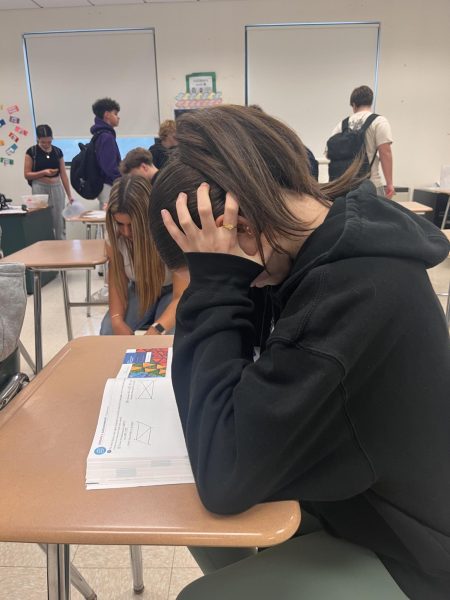Troubles next door: Problems at NBHS

Though DHS and neighboring New Bedford High School lie just five miles apart, there is a world of difference between the two. While DHS is generally prospering, NBHS is struggling just to meet basic standards.
NBHS does offer many opportunities to its students: AP classes, winning athletic teams, and an excellent show choir and drama club, just to name a few.
“NBHS has a lot of school spirit, and we are all like one big family,” said NBHS sophomore Alanna Gracia.” Everyone participates when it comes to rallies and football games. We have a lot of pride.”
However, NBHS has been deemed an underperforming school by the state. The state uses a scale of 1 to 5 to rate the quality of a school, 1 being the best and 5 being the worst. NBHS has been identified as a Level 4 school.
“The fact that the state may be taking over has everyone a little bit concerned because no one really knows what the outcome may be,” said Gracia.
Though standardized tests are a double-edged sword, they are often a good indicator of the quality of a school’s education. According to data from the Massachusetts Department of Elementary and Secondary Education, NBHS scored below all of the state proficiency MCAS score averages: 19% fewer proficient students in English Language Arts, 36% fewer in math, and 36% fewer in science/engineering technology.
Likely due to these struggles, enrollment at NBHS has decreased significantly. Many students seeking alternative educational opportunities have opted to attend Greater New Bedford Regional Voc Tech, Bishop Stang High School, or other local schools. Unfortunately, many NBHS students have also dropped out. NBHS has traditionally been organized into different houses: Blue, Tan, Gold, and Green. However, due to insufficient numbers of students, Tan House has been closed.
According to the Standard Times, even with this reduced school population, only 55% of NBHS students graduate on time.
“The effect of the struggles at NBHS is definitely rippling down to the middle and elementary schools. I have friends who are teachers there who are feeling it,” said English teacher Jessica Pacheco, who has firsthand experience working in the New Bedford school system: she taught at Normandin Middle School for four years. “They feel unsafe and underappreciated, which is the worst thing to feel as a teacher,” she said.
One solution, proposed by New Bedford Schools Superintendent Pia Durkin, is the “turnaround system,” where up to half of NBHS faculty would be replaced. While some believe that this would give the school a fresh start, others are outraged, believing that this scapegoats the teachers for NBHS’s problems.
“Dr. Durkin’s plan is way too radical for this city. Firing all the teachers will just further destabilize an already unstable environment,” said NBHS alumnus Nicholas Lawrence. “The smart, safe, and right thing to do would be to let the teachers do their job and teach. You can’t put kids in such a hostile environment and expect them to succeed.”
Many believe that the teachers are not to blame for NBHS’s troubles, but the longstanding issues of poverty, frequent truancy, lack of school supplies, gangs, teen pregnancy, and low motivation. “Even good teachers have had their love and passion for teaching sucked from them. Who would want to go back to that situation?” said Mrs. Pacheco.
The proposal of the turnaround system prompted a rally of over 300 people at City Hall Square on January 17 asking for the teachers’ jobs to be spared.
On January 29, the New Bedford Educators Association finally ratified the official agreement to Durkin’s turnaround system. The agreement stated that teachers who retired or were laid off in the previous year would count toward the 50% of teachers who would be replaced. It was agreed that teachers without professional teacher status will be laid off before licensed teachers with professional standing; however, educators are not completely satisfied with the outcome.
Though efforts are being made to remedy the current hardships at NBHS, the school still has a long, uphill battle on its journey toward being a successful institution of learning.






